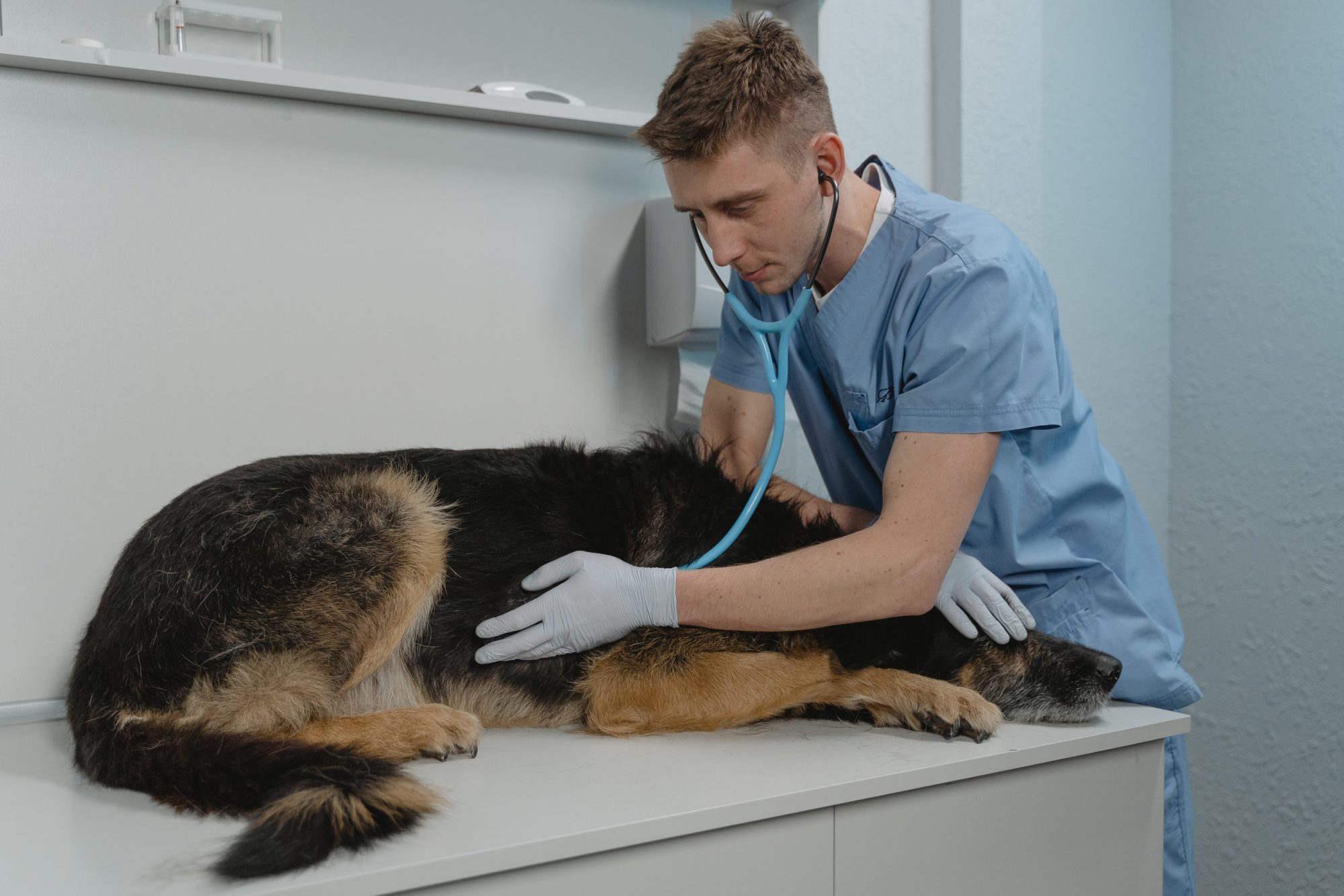Ear infections, or otitis externa, is an overgrowth of bacteria or yeast in the external ear canal. It is one of the most common and frustrating diseases in dogs. Many people mistakenly attribute their dog’s ear infections to things like having floppy ears or swimming in water. In reality, normal dogs should not be getting ear infections over and over again, regardless of what type of ear shape they have. The same is true for swimming- a normal dog should be able to swim in water without developing a problem. If your pet is getting ear infections, that’s a sign that something is not right. Until the underlying disease is identified and controlled, the ear infections will just keep coming back. To make matters worse, when antibiotics are used over and over again, the bacteria eventually becomes resistant, meaning regular antibiotics will no longer kill it. If the infections continue, the bacteria can become so resistant that it’s very hard to clear up!
The most common underlying cause of ear infections in dogs is skin allergies. That is a surprise to many people, because most of us don’t really think of the ears as being part of the skin. They are though- the pinnae (ear flaps) are covered with haired skin just like the rest of the body. That skin continues down into the ear canals, where it’s modified to have less hair (except for poodles- their ear canals are crazy hairy) and ceruminous glands, which produce ear wax. When a pet has skin allergies, inflammation damages the skin barrier, which makes it easier for bacteria and yeast to overgrow. Some allergic pets get infections on their skin, some get ear infections, and some get a combination of both- we really don’t know why some body parts are more affected than others in different cases. Pets with allergies often display signs of itching like scratching, licking, chewing, rubbing, or head shaking. They can also have sneezing, reverse sneezing, coughing, watery eyes, squinting, vomiting, or diarrhea. Diagnosing and controlling the underlying allergy will eventually stop the ear infections from returning. Allergic triggers in pets can be environmental such as pollens, molds, dust mites, and insect bites, or they can be food proteins such as chicken, beef, fish, egg, or dairy. Grains or gluten are not a common source of food allergy in pets, despite the recent popularity of grain-free diets (that is a marketing plow by boutique brands, trying to take the market share away from the established brands of dog foods- don’t fall for it!). Your veterinarian or a board-certified veterinary dermatologist® can help you get to the bottom of what is triggering your pet’s allergy. Treatments can include allergy testing and allergen-specific immunotherapy (“allergy shots” or “oral allergy drops”), prescription hypoallergenic elimination diet trials, anti-itch medications, and immune-modifying drugs to calm down the allergic response.
Other causes of ear infections can be a foreign body, meaning some foreign object or material present in the ear that shouldn’t be there (this is usually a one-sided ear infection), a tumor, polyp, or cysts growing in the ear (this is usually a one-sided ear infection), or an infection that ascended from the respiratory tract through the Eustachian tube (this is more common in cats than dogs.) Your veterinarian can help diagnose these causes, sometimes by direct examination of the ears or sometimes with advanced imaging, like a CT scan.
There are also perpetuating problems with ear infections, meaning secondary issues that did not start the infection, but they help keep the infection going. If perpetuating problems aren’t dealt with, then the ear infections might not get better, even if the underlying cause is being treated. A common perpetuating problem is swelling or hyperplasia of the ear canals. Hyperplasia means excessive growth of the skin or lining of the ear canal. When an area is infected or irritated long-term, the body tries to heal by growing thicker skin (similar to a callus forming). This is a problem in the ear canal which is shaped like a long, skinny tube- that extra tissue clogs up the ear canal so that medications can’t get down where they need to go! Steroids are usually most helpful at reducing swelling and thinning out hyperplastic ear tissue. Steroids can also have a lot of side effects (increased hunger, thirst, urination, and panting in the short-term; weight gain, diabetes, thinning fur, suppressed immune system in the long-term) so we would never want to rely on them as our only plan, but they can be very helpful while we’re addressing the infection and underlying problem. In some dogs with really severe, thick hyperplasia, laser surgery to remove the excess tissue is helpful. Last, really advanced cases of hyperplasia can also have mineralization of the ear canal. Normally the ear canal is supported by rubbery, flexible cartilage. With chronic irritation, the body starts to lay down calcium in the cartilage as a way to strengthen the area and protect itself. Unfortunately, because the ear canal is a long, skinny tube, when the flexible cartilage turns into rock-hard bone, you wind up with an ear that is permanently swollen shut. Ear drops can never get down deep enough to treat the infection, and Total Ear Canal Ablation (TECA) surgery to remove the entire ear canal is the only way to help these patients. We are ALWAYS trying to avoid this outcome at All Clear Veterinary Dermatology, but in a small number of patients it is their only hope.
If your pet is struggling with ear infections, ask your veterinarian to contact All Clear Veterinary Dermatology for a consultation. We would love to help you get to the bottom of it!





